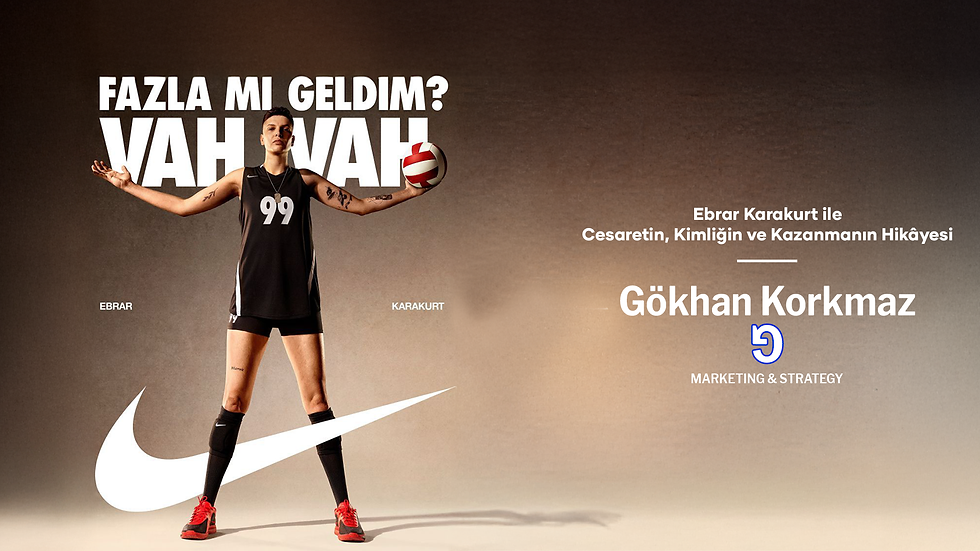Nike’s “So Do It” Campaign: A Story of Courage, Identity, and Winning with Ebrar Karakurt
- Gökhan Korkmaz

- 28 May
- 3 dakikada okunur

Brand campaigns are not merely tools for product promotion; they are cultural statements, vehicles of value expression, and social positioning tools. Viewed through this lens, Nike’s “So Do It” campaign is not just a marketing move—it’s a global call to solidarity for women, for those deemed “too much,” and for anyone proud of their difference.
A New Meaning for a Global Stance: “So Do It”
Nike’s iconic motto, “Just Do It,” has long celebrated individual determination. But in 2025, the brand took a bold new turn with the evolution of this slogan: “So Do It.” This campaign pushes back against clichés aimed at women athletes—“too ambitious,” “too aggressive,” “too emotional”—and flips them into affirmations of strength.
With global sports figures like Caitlin Clark, Sha’Carri Richardson, Sabrina Ionescu, and A’ja Wilson, the campaign doesn’t just highlight athleticism—it centers identity, defiance, and raw authenticity.
The Turkish Chapter: Ebrar Karakurt’s Narrative
Representing Turkey in the campaign is Ebrar Karakurt, a volleyball player whose significance goes far beyond her performance on the court. Openly queer and unapologetically expressive, Ebrar has faced persistent homophobic backlash in her country. Yet she continues to show up—bold, unfiltered, and fiercely herself.
The campaign’s Turkish posters carry a striking message:
“Too much for you? Boo hoo.”
This line speaks directly to the labels often thrown at women who don’t conform—too loud, too proud, too visible. Ebrar embraces these judgments and reclaims them, turning them into a source of power. Nike doesn’t just feature her skills; it amplifies her stance as a cultural figure.
Strategic Positioning: Emotional Solidarity Meets Cultural Alignment
With this campaign, Nike once again proves that it sells more than products—it represents values. “So Do It” positions the brand as not just a sporting goods company but a cultural actor that takes a stand on issues of representation and empowerment. It’s a textbook example of value-based branding, where emotional storytelling intersects with social relevance.
Tactical Timing and On-Court Resonance
Nike also timed the Turkish leg of the campaign with upcoming volleyball fixtures. On June 18, Turkey will face the Dominican Republic in the FIVB Women’s Volleyball Nations League, and Ebrar Karakurt will take the court in her national jersey. This won’t just be a match—it will be a live embodiment of the campaign’s spirit. When she plays, she doesn’t just aim to win points—she carries a message:
“They say you can’t win. So win.”
A Symbolic Return: Ebrar Comes Home
After four years with Russia’s Lokomotiv Kaliningrad, Ebrar is set to return to Turkey—a move that coincides with the campaign, both practically and symbolically. This isn’t just a transfer; it’s a new chapter in the story of a woman athlete who has always drawn her own map and challenged the rules of the game.
Conclusion: To Be a Brand Is to Take a Stand
Nike’s “So Do It” campaign proves once again that great brands don’t just market—they take a position. By collaborating with figures like Ebrar Karakurt, Nike signals not just visibility, but solidarity. It shows us that in today’s landscape, choosing who to stand next to is as important as what you stand for.
This campaign dismantles the tired notion that “you can’t advertise courage.” On the contrary, with the right person, the right timing, and the right message—advertising can become the language of resistance.


